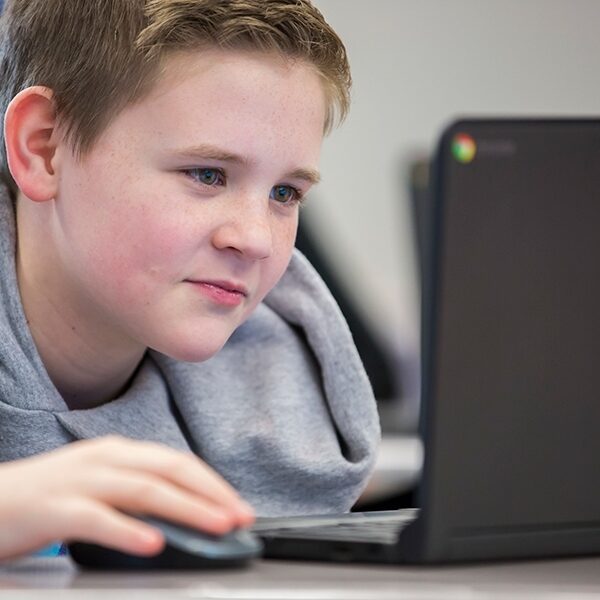
We are graduate students at the Harvard Graduate School of Education (HGSE) studying educational technology and innovation. As part of Barbara Treacy’s course, Connected Teaching in the Digital Age, we partnered with The Learning Accelerator (TLA) to research an important stakeholder in the field of blended learning: parents. We surveyed parents of children in blended learning schools or classrooms to gauge their attitudes towards this learning approach which integrates in-person teaching with technology.
Methodology
We distributed an online questionnaire containing sections on parents’ understanding, perceptions, and concerns about blended learning, as well as the role technology plays in school and the home. The survey concluded with an optional demographics section. We distributed the survey through TLA’s social platforms, networks, and HGSE student and alumni networks. We collected a total of 30 responses.
Key Findings of the Survey
Our survey revealed that some parents’ attitudes toward blended learning were neutral, and to a lesser extent, positive. 36.7% of parents could clearly define blended learning, and 63.3% felt they had a good understanding of how technology was being used in their children’s classrooms. When asking about parents’ general feeling towards blended learning on a Likert scale of 1-5, 14 out of the 30 respondents indicated 3 (neutral), 10 respondents indicated 4 (somewhat positive), and 6 respondents indicated 5 (very positive).
In response to a question about whether blended learning would help their children outside of school, 73.3% of parents indicated “yes” and 26.7% indicated “maybe.” In response to a question about whether blended learning would prepare their children better, worse, or as well as traditional schooling that does not incorporate technology, 56.7% indicated “better,” 40% indicated “same,” and 3.3% indicated “worse.”
In the concerns section, we gave parents the opportunity to check off any concerns they had regarding blended learning. 43.3% of parents marked child’s privacy, 40% marked child’s learning outcomes, 20% of parents marked no concerns, and 16.7% marked child’s physical health. Some respondents opted to give their own answers, including, “Too much screen time, social aspect, and online access being monitored.”
When asked about who they rely upon most for information on blended learning at their child’s school, 73.3% of respondents indicated “my child’s teachers,” 10% of respondents indicated “Internet,” and 6.7% indicated “other parents/caregivers.” None of the other answer options, which included “school principal” and “other,” yielded a response above 3.3%.
We categorized open-ended responses to the question “What does your child say about blended learning?” according to valence. Positive responses emphasized student choice, personalization, individually-paced learning, and using technology creatively. Negative responses criticized the use of technology at the expense of teacher feedback and interaction, as well as technology being used for rote tasks.
Takeaways and Recommendations for Educators Working with Parents on Blended Learning
Educators engaged in blended learning should increase their efforts to involve parent communities, ensuring that parents understand the importance and benefits of blended learning in an increasingly technology-reliant world. Our results indicate that parents usually rely on teachers for information on blended learning, so it is crucial that teachers feel comfortable explaining their blended learning practices to their students’ parents. It would be useful for school administrations to provide professional development to build teachers’ capacity and depth of knowledge about blended learning when communicating with parents.
Parents’ open-ended responses suggest that the way technology is used determines the educational impact it will have. Parents saw using technology to foster collaboration, personalization, and student-based learning as positive, while using it to replace or mitigate the teacher’s role or implement rote drill activities was viewed as negative. Educators must ground their use of technology in pedagogy and capitalize on the unique, innovative ways of learning that it enables.
Conclusion
Our results indicate that although parents’ perceptions of blended learning are neutral or positive, their understanding is limited. Almost two-thirds of our respondents did not have a clear understanding of what blended learning is. Though the majority of parents believed blended learning would help their children outside of school, fewer parents believed that blended learning was superior to traditional non-technology-based education. Although it is promising that parents are not against blended learning, it is clear that they are not passionate or informed enough to advocate for it. We hope these findings will motivate schools to better engage and inform parent communities. Because parents are usually heavily invested in their children’s futures, their support would be a valuable asset in improving education.
